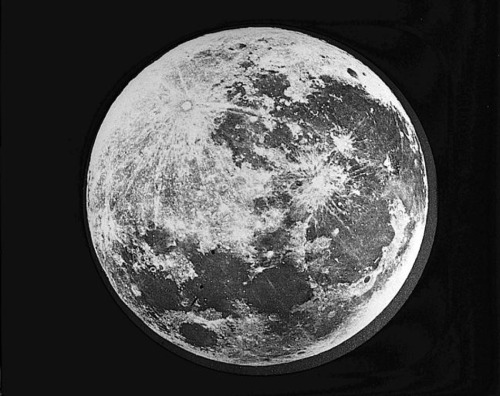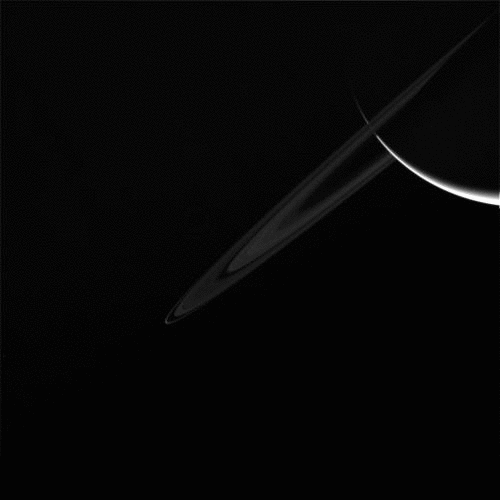November 5, 2007 – The Space Shuttle Discovery Floats High Above Our Lovely Earth, Observed From The

November 5, 2007 – The Space Shuttle Discovery floats high above our lovely Earth, observed from the International Space Station.
(NASA)
More Posts from Needingsomespace and Others

The perihelion is the point in the orbit of the Earth where it is nearest to the Sun. It is the opposite of aphelion.
This concept can be applied to any orbiting object.

James Hall Nasmyth - Full Moon - 1874 - via Eastman Museum





February 24, 1969 – Apollo 11 moonwalkers Neil Armstrong and Buzz Aldrin train for the Moon by going on a geology field trip to the Sierra Blanca region in West Texas. (NASA)

We’re studying a new method of water recycling and carbon dioxide removal that relies on specific geometric shapes and fluid dynamics, rather than complex machinery, in an effort to help build better life support systems for spacecraft. The research could also teach us more about the water processing approaches we take on Earth. Here, NASA astronaut Jack Fischer, is working with the Capillary Structures for Exploration Life Support (Capillary Structures) investigation capillary sorbent hardware that is made up of 3D printed contractors that are supported by tubing, valves and a pump.
Learn more about how this highly interactive investigation works, and what we could learn from the results HERE.
Make sure to follow us on Tumblr for your regular dose of space: http://nasa.tumblr.com
Don’t cry for Cassini: il lento suicidio nell’atmosfera del Signore degli Anelli
La sonda Cassini, lanciata il 15 ottobre 1997, è entrata in orbita attorno a Saturno il primo luglio del 2004. Prima di Cassini, Saturno veniva osservato quasi esclusivamente da Terra con l'eccezione delle immagini e dei dati raccolti dalle sonde Pioneer 11 e Voyager 1 e Voyager 2, che hanno effettuato dei flyby del pianeta, rispettivamente nel 1979, nel 1980 e nel 1981.

Cassini ha cambiato completamente la nostra visione di Saturno! Nei 12 anni trascorsi a orbitare attorno al pianeta, a fotografare e studiare i suoi anelli e le sue lune, la sonda ha percorso circa 2.2 miliardi di miglia dal suo arrivo nel 2004 e ha raccolto circa 600 GB di dati, scoperto 10 lune, inviato circa 380.000 immagini.
Oggi 30 novembre 2016 la missione Cassini della NASA inizierà una serie di orbite che la porteranno a spingersi oltre il bordo esterno degli anelli principali di Saturno (oltre le orbite dell'anello F), a 7.800 chilometri di distanza.

Gli ingegneri NASA stanno effettuando correzioni di rotta volte a modificare l'orbita di Cassini in modo da aumentare la sua inclinazione rispetto all'equatore e agli anelli di Saturno e di beneficiare di una "spinta" gravitazionale di Titano per inserirsi nella prima delle fasi conclusive della sua missione. Grazie a questo passaggio Cassini orbiterà attorno al polo Nord e al polo Sud del pianeta fino al 22 aprile 2017, tuffandosi ogni sette giorni nel bordo esterno degli anelli principali, per un totale di 20 volte, sfiorandoli per raccogliere campioni di molecole e gas

Durante queste orbite, Cassini passerà a circa 90.000 chilometri sopra alle nubi di Saturno: sarà una fase emozionante, ma sarà solo un preludio a quello che ci attenderà a partire dal mese di aprile, quando la sonda inizierà il Gran Finale, che terminerà il 15 settembre con il tuffo nell'atmosfera di Saturno.
Il motivo che ha portato gli scienziati a decidere per questa soluzione è che la sonda sta per esaurire il carburante e c'è l'esigenza di tutelare le lune di Saturno potenzialmente abitabili. A questo punto la soluzione scientificamente migliore è quella di progettare il fine missione in modo da condurre un'indagine straordinaria e non creare problemi al sistema di Saturno.

50 YEARS AGO TODAY: On November 13, 1966, Gemini 12 astronaut Buzz Aldrin orbits the Earth with his trusty slide rule floating nearby and an unlit pipe in his mouth.


ON THIS DAY: NASA techs assist Gus Grissom during suiting operations at Kennedy Space Center, October 18, 1966.



Inmarsat-5 F4 successfully launched from LC-39A at Kennedy Space Center at 7:21pm EDT May 15. The Falcon 9 deployed the satellite into Geostationary Transfer Orbit 31 minutes and 48 seconds after liftoff. Since the rocket was flying in its expandable configuration, following main engine cutoff the first stage fell into the Atlantic ocean and was not recovered. The launch of the Inmarsat mission marked the first time SpaceX began testing countdown procedures for their next major upgrade of the Falcon 9 rocket, the Block IV. Normally, the rocket’s liquid oxygen propellant is loaded into the rocket 45 minutes before launch, ten minutes after RP-1. For Inmarsat, the LOX was loaded 35 minutes before liftoff. The Block IV variant will see this procedure occur during every countdown. Check out or Inmarsat-5 F4 launch archive here.
P/c: SpaceX.
-
 sagansclassic reblogged this · 2 years ago
sagansclassic reblogged this · 2 years ago -
 elvonrichard liked this · 2 years ago
elvonrichard liked this · 2 years ago -
 kihi reblogged this · 8 years ago
kihi reblogged this · 8 years ago -
 away-from-the-barracks reblogged this · 8 years ago
away-from-the-barracks reblogged this · 8 years ago -
 a-d-v-e-n-t-u-r-e-s liked this · 8 years ago
a-d-v-e-n-t-u-r-e-s liked this · 8 years ago -
 husband-wife-onedog liked this · 8 years ago
husband-wife-onedog liked this · 8 years ago -
 parts-of-me-unravelling liked this · 8 years ago
parts-of-me-unravelling liked this · 8 years ago -
 altairfilms liked this · 8 years ago
altairfilms liked this · 8 years ago -
 storiesbyarthindley reblogged this · 8 years ago
storiesbyarthindley reblogged this · 8 years ago -
 treeacle liked this · 8 years ago
treeacle liked this · 8 years ago -
 arcadiagalaxiaofficial-blog reblogged this · 8 years ago
arcadiagalaxiaofficial-blog reblogged this · 8 years ago -
 arcadiagalaxiaofficial-blog liked this · 8 years ago
arcadiagalaxiaofficial-blog liked this · 8 years ago -
 ghostmonkey liked this · 8 years ago
ghostmonkey liked this · 8 years ago -
 pipius reblogged this · 8 years ago
pipius reblogged this · 8 years ago -
 c3p-mo reblogged this · 8 years ago
c3p-mo reblogged this · 8 years ago -
 needingsomespace reblogged this · 8 years ago
needingsomespace reblogged this · 8 years ago -
 illogicalconsequence liked this · 8 years ago
illogicalconsequence liked this · 8 years ago -
 screamingtoosoftly liked this · 8 years ago
screamingtoosoftly liked this · 8 years ago -
 humanoidhistory reblogged this · 8 years ago
humanoidhistory reblogged this · 8 years ago
